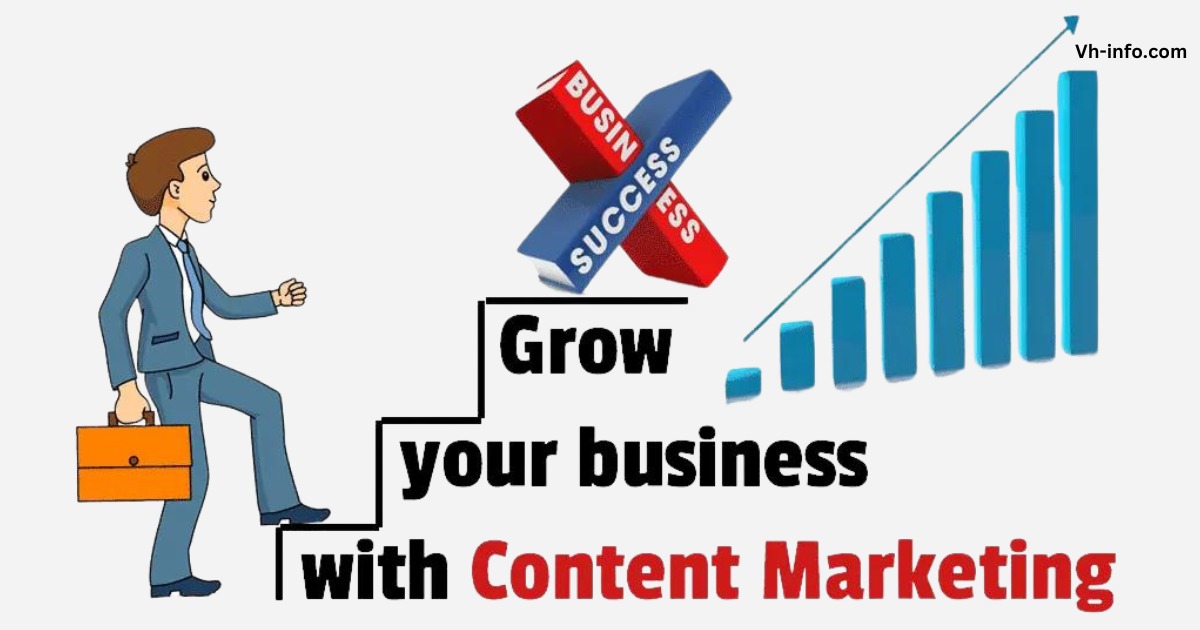Introduction to Content Marketing
What is Content Marketing?
Content marketing is all about creating and sharing valuable, relevant content to attract and retain a clearly defined audience — and ultimately, drive profitable customer action. It’s not just about selling; it’s about connecting, informing, and building trust.
Why is Content Marketing Important for Online Businesses?
Think about it — when was the last time you bought something without doing a quick Google search first? Exactly. Content marketing puts your business in front of people when they’re searching for answers, building trust even before they become customers.
Setting a Strong Foundation
Define Your Business Goals
You need a destination before you start the journey. Are you trying to get more leads, boost sales, or just grow your audience? Get clear on your objectives so every piece of content serves a purpose.
Know Your Target Audience
You can’t market to everyone. The clearer you are on who your audience is, the better your content will hit home.
Creating Detailed Buyer Personas
Build out personas with age, job titles, challenges, hobbies — even what social media platforms they use. This helps you speak directly to your ideal customer.
Crafting a Winning Content Strategy
Choosing the Right Content Formats
Not everyone likes to read blogs. Some prefer videos, others love podcasts. Figure out what your audience consumes and create accordingly — blogs, videos, infographics, social media posts, etc.
Setting a Content Calendar
A content calendar keeps you organized and consistent. Plan at least a month ahead. Consistency builds trust and keeps your audience coming back.
The Role of SEO in Content Marketing
If your content isn’t showing up in search engines, you’re missing out. Use keyword research tools like Google Keyword Planner or Ubersuggest to optimize your content. SEO helps your content reach the right people.
Creating High-Quality Content
The Pillars of Great Content
Relevance
Make sure your content addresses real problems or interests your audience has.
Value
Educate, inform, or entertain. If your content isn’t helping your audience, they won’t stick around.
Consistency
Posting once in a blue moon won’t cut it. Stick to a schedule.
Using Storytelling to Connect With Your Audience
People remember stories, not stats. Wrap your message in a story that resonates — something they can relate to. It’s not just about facts; it’s about feelings.
Leveraging Different Content Channels
Blogging for Organic Traffic
Blogging is the backbone of many content strategies. It boosts SEO, builds authority, and answers your audience’s burning questions.
Social Media for Reach and Engagement
Platforms like Instagram, LinkedIn, and Facebook let you share snippets of your content and drive traffic. Engage in comments, ask questions — make it a two-way conversation.
Email Marketing for Retention and Conversion
Build an email list and stay in touch. Weekly newsletters, updates, offers — email keeps your brand top-of-mind.
Video and Podcasting for Deeper Engagement
Video content is booming. Whether it’s YouTube or Instagram Reels, it creates more connection. Podcasts are great for on-the-go audiences who love to learn passively.
Sometimes, paying for reach is worth it. Facebook Ads, Google Ads, and native advertising can give your content the boost it needs to reach new eyes.
Influencer and Affiliate Marketing
Collaborate with people who already have your audience. It’s like borrowing trust — and it works.
Repurposing and Cross-Promotion
Turn a blog into an infographic, a video into a carousel post, or a podcast into a quote image. One piece of content can be sliced a dozen ways.
Measuring Content Performance
Key Metrics to Track
Look beyond just views. Measure engagement, bounce rates, time on page, conversions, and shares. These tell you what’s really working.
Tools to Use for Analytics
Use tools like Google Analytics, SEMrush, Ahrefs, or HubSpot to track and tweak your strategy. Data is your best friend here.
Continuous Improvement and Scaling
A/B Testing Your Content
Test headlines, formats, images, CTAs — even the time of day you post. Small tweaks can make a big difference.
Updating and Refreshing Old Content
Don’t let your evergreen content gather dust. Refresh it with new stats, updated links, or a new angle to keep it ranking and relevant.
Outsourcing Content Creation
As you grow, you might need help. Hire freelancers, agencies, or even use AI tools for ideation and assistance (but keep the human touch!).
Common Content Marketing Mistakes to Avoid
-
Ignoring SEO
-
Being inconsistent
-
Creating content without strategy
-
Not understanding your audience
-
Focusing only on sales
Avoid these, and you’re already ahead of the curve.
Real-Life Success Stories
Take Beardbrand — they used YouTube and blog content to educate their audience about beard grooming and turned into a multi-million-dollar business.
Or consider HubSpot — their blogs and free resources turned them into one of the biggest names in inbound marketing.
Content works — when done right.
Conclusion
Content marketing isn’t just a trend — it’s the backbone of successful online businesses today. Whether you’re a solopreneur or running a growing eCommerce brand, investing in content is one of the smartest moves you can make. It takes time, consistency, and strategy — but the payoff is worth every bit of effort.
FAQs
1. What is the best content format for beginners?
Start with blogging or short-form social media content. It’s easy to create and manage.
2. How long does it take to see results from content marketing?
Typically, it can take 3–6 months to see consistent results — but the growth is compounding.
3. Do I need a blog for content marketing?
Not necessarily, but a blog is a great way to build authority and drive organic traffic.
4. How often should I post content?
At least once a week is ideal for consistency, but focus on quality over quantity.
5. Can small businesses compete with big brands in content marketing?
Absolutely! With authenticity, niche focus, and creativity, small brands can build loyal communities and even outperform big players.
Read More Article About Online Business & Entrepreneurship
